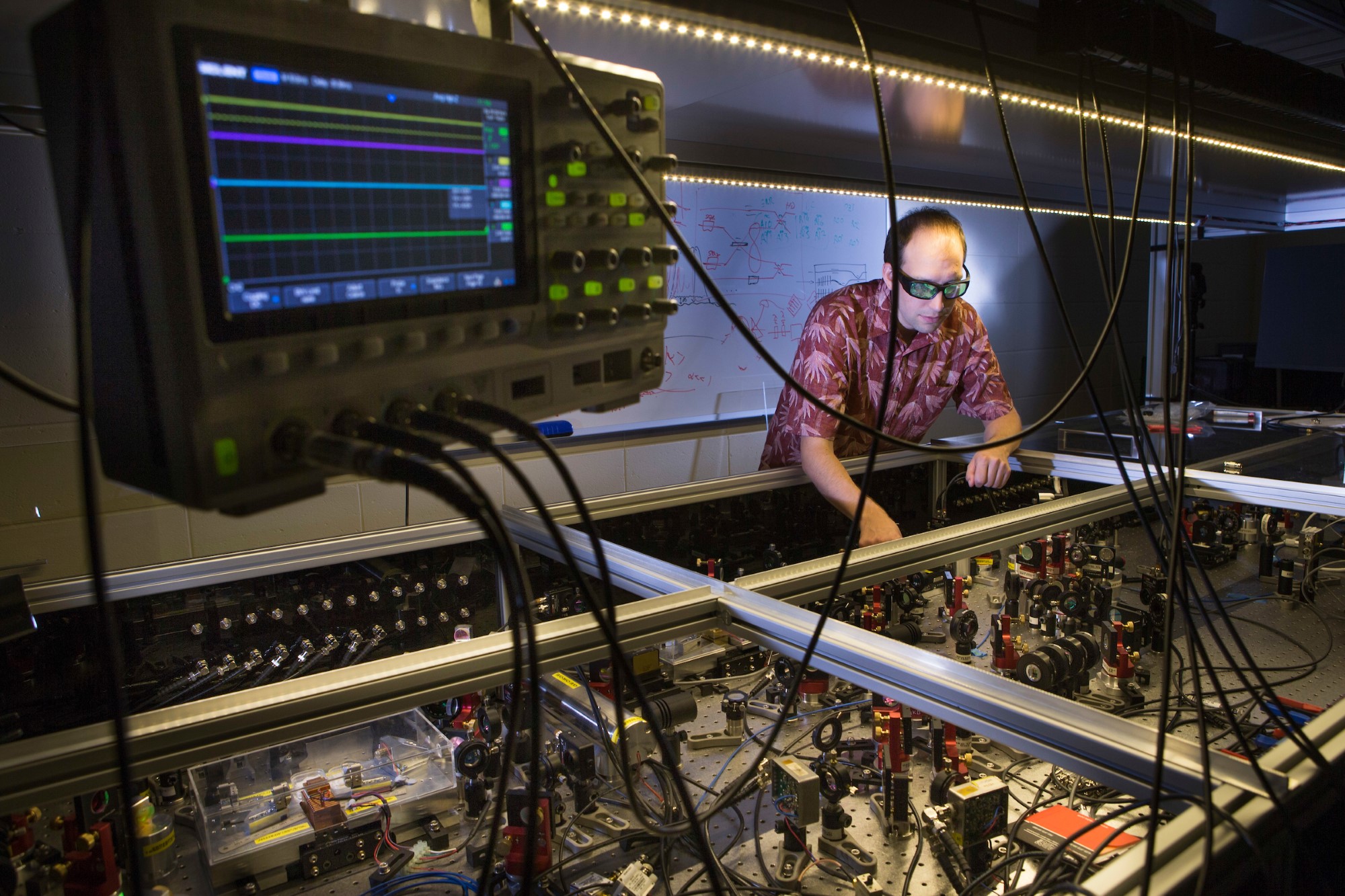
Research projects
Discover the forefront of astronomy and astrophysics through our projects, ranging from deep-space communication systems to groundbreaking adaptive optics. Explore our diverse, ongoing research initiatives shaping the future of space science.
Displaying 151 - 165 of 171 project(s).
In this project, you will lead development of a key sub system (optical, mechanical, computational) to enable novel ultra-high resolution, visible light instrument Pyxis: a prototype for an astrophysical space interferometer.
Theme
- Instrumentation
- Stellar and planetary astronomy
Student intake
Open for Bachelor, Honours, PhD students
People
- Associate Professor Tony Travouillon, Supervisor
- Professor Michael Ireland, Supervisor
In this project, you will lead development of a key sub system (optical, mechanical, computational) to enable novel ultra-high resolution, visible light instrument Pyxis: a prototype for an astrophysical space interferometer.
Theme
- Instrumentation
- Stellar and planetary astronomy
Student intake
Open for Bachelor, Honours, PhD students
People
- Associate Professor Tony Travouillon, Supervisor
- Professor Michael Ireland, Supervisor
Supermassive black holes in the early Universe are more massive than we can presently explain. We aim to construct their demographics and reveal their origin.
Theme
- Black hole phenomena
- Structure and evolution of the Cosmos
Student intake
Open for Honours, PhD students
Observatory
People
- Associate Professor Christian Wolf, Supervisor
Blue stragglers are main-sequence stars that are more luminous and bluer than stars of the same age, and their existence has long defied standard stellar evolution.
Theme
- Galactic archaeology
- Stellar and planetary astronomy
Student intake
Open for Bachelor, Honours students
People
- Associate Professor Luca Casagrande, Supervisor
The student will work with Prof. Krumholz to design and run simulations using the enzo adaptive mesh refinement code.
Theme
- Stellar and planetary astronomy
- Structure and evolution of the Cosmos
The student will analyse Gaia data to recompute orbits of unbound metal-poor stars, exploring their origins and role in the Milky Way’s evolution.
Theme
- Galactic archaeology
Student intake
Open for Summer Scholar, Bachelor, Master students
Observatory
People
- Benjamin Lowe, Collaborator
- Dr Giacomo Cordoni, Supervisor
The student will analyse Gaia data to recompute orbits of unbound metal-poor stars, exploring their origins and role in the Milky Way’s evolution.
Theme
- Galactic archaeology
Student intake
Open for Summer Scholar, Bachelor, Master students
Observatory
People
- Benjamin Lowe, Collaborator
- Dr Giacomo Cordoni, Supervisor
The student will model the gamma-ray emission around the Milky Way's central bubble.
Theme
- Galactic archaeology
In this project, the idea would be to combine the publicly available GALAH and APOGEE spectra and analyse them together: We should be able to measure up to 40 different elements from hundreds of lines and provide the community with reference values.
Theme
- Galactic archaeology
- Stellar and planetary astronomy
By conducting this comprehensive study, we will gain valuable insights into the distinctive properties of the HI gas in the Magellanic Stream. This will allow us to compare the properties of HI gas in the Magellanic Stream with those in the Magellanic Clouds and the Milky Way, shedding light on the differences between.
Theme
- Structure and evolution of the Cosmos
Veloce Rosso will be Australia’s next premier astronomical instrument.
Theme
- Instrumentation
By mapping the motions of many galaxies, this project aims to precisely measure the amount and distribution of both visible and dark matter and test Einstein’s theory of gravity.
Theme
- Structure and evolution of the Cosmos
By mapping the motions of many galaxies, this project aims to precisely measure the amount and distribution of both visible and dark matter and test Einstein’s theory of gravity.
Theme
- Structure and evolution of the Cosmos
The focus of this PhD research is the study of the early evolution of life using abundances of chemical elements in different life forms and their environments, at different temporal and spatial scales.
Theme
- Stellar and planetary astronomy
The goal of this project is to use new, high-resolution simulations to understand how key physical processes, like stellar feedback and gravitational instabilities, shape disk galaxies (from 11 Gyr ago to today).
Theme
- Structure and evolution of the Cosmos
Student intake
Open for Honours, Master, PhD students
Observatory
People
- Associate Professor Emily Wisnioski, Collaborator
